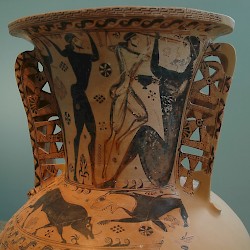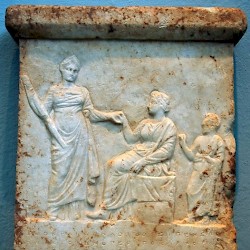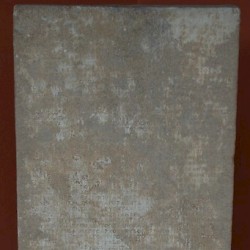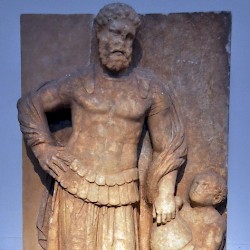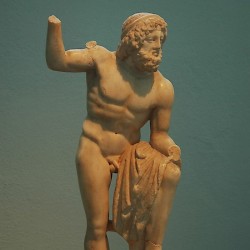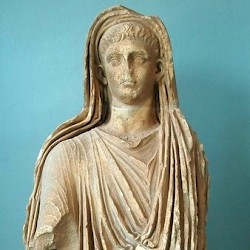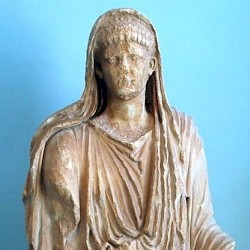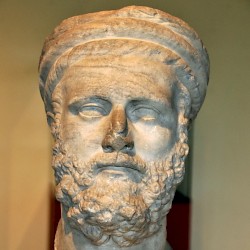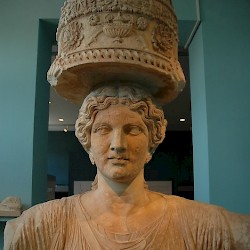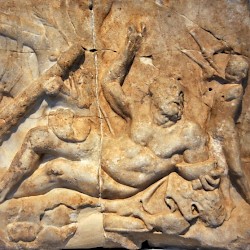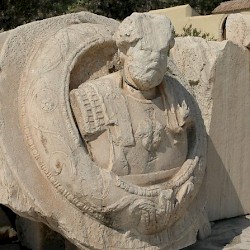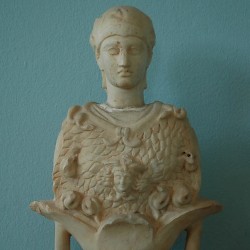Eleusis
Q204905Eleusis (Greek Ἐλευσίς): town to the west of Athens, site of the sanctuary where the Mysteries of Demeter and Kore were celebrated.
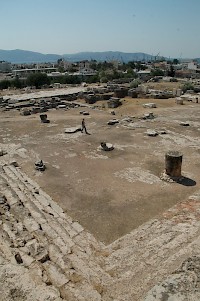
In Eleusis, three roads came together: a road from the Peloponnese, Corinth, and Megara in the southwest, a road from Boeotia and Thebes in the north, and a road from Athens in the east. Moreover, the town was situated on a short distance from the sea had a well-protected harbor. It was inevitable that the ancient (originally Mycenaean) sanctuary of Demeter and her daughter Persephone (usually called Kore, "girl"), would become important.
According to Greek legend, the town was conquered by the Athenian king Erechtheus, and although the reliability of this story is disputable, the sanctuary was always under Athenian political control, although the priests were usually from Eleusis. The main festival, celebrated since about 600 BCE, was the large procession from Athens to the sanctuary, along the Sacred Road, which took place every summer.
The people would attend the Mysteries, a festival that commemorated how Persephone had been abduced by Hades, how her mother Demeter had been searching for the young woman, and how she was brought back to life. After her return, Demeter and Persephone would give ears of corn to Triptolemus, who would teach agriculture to the first humans. To the initiated, the rebirth of Persephone was a symbol of continued, eternal existence.
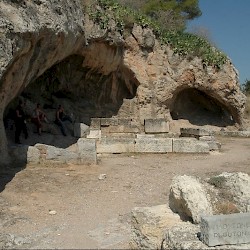 Eleusis, Cave of Hades |
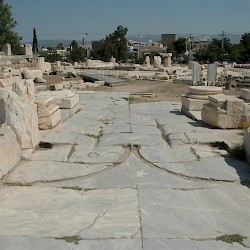 Eleusis, Lesser Propylaea |
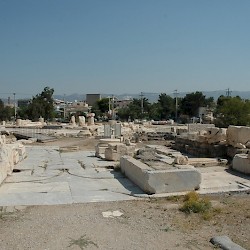 Eleusis, Lesser Propylaea |
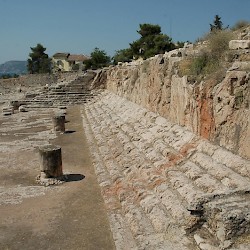 Eleusis, Telesterion, Seats |
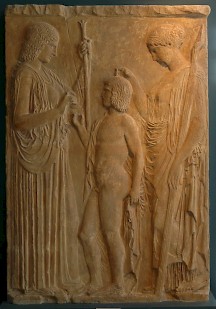
The sanctuary of Eleusis consisted of several sites. The main building was the Telesterion, a large and dark hall where the visitors could witness the rituals of the Mysteries. For example, the main priest (the hierophant) would show the sacred objects, while reciting sacred texts. The Telesterion was rebuilt several times on more or less the same site, but the main building phase was from the age of Pericles; the architect was Ictinus, who has also designed the Parthenon. Another sacred place was the Cave of Hades, where the god of the Underworld had abducted Persephone. The temple of Hades was very ancient but was rebuilt on many occasions.
Over the centuries, the sanctuary was expanded with other, minor monuments. In the fourth century BCE, the stoa of Philon was added, named after its architect. In 54 BCE, the Roman senator Appius Claudius Pulcher added a monumental gate with remarkable caryatids (the Lesser Propylaea). The emperors Hadrian (r.117-138) and Marcus Aurelius (r.161-180), both initiates, dedicated temples to their wives Sabina and Faustina II.
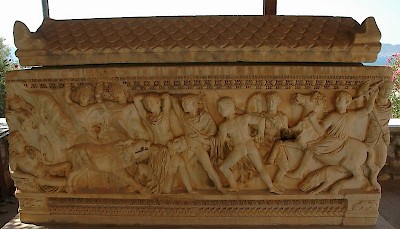
In 170 CE, the Sarmatians invaded Greece and destroyed Eleusis. The emperor Marcus Aurelius restored the sanctuary and added the Larger Propylaea. Continued imperial favor can be deduced from the initiation of other rulers, like Gallienus (r.260-268).
The last emperor to be initiated was Julian the Apostate (r.361-363). The Mysteries were celebrated until the end of the fourth century. One of the last people to be initiated was Synesius of Cyrene. In 392, the emperor Theodosius I put an end to all pagan sacrifice and cults, but the Eleusinian sanctuary may have continued to operate for several years; it was finally destroyed by Alaric.
